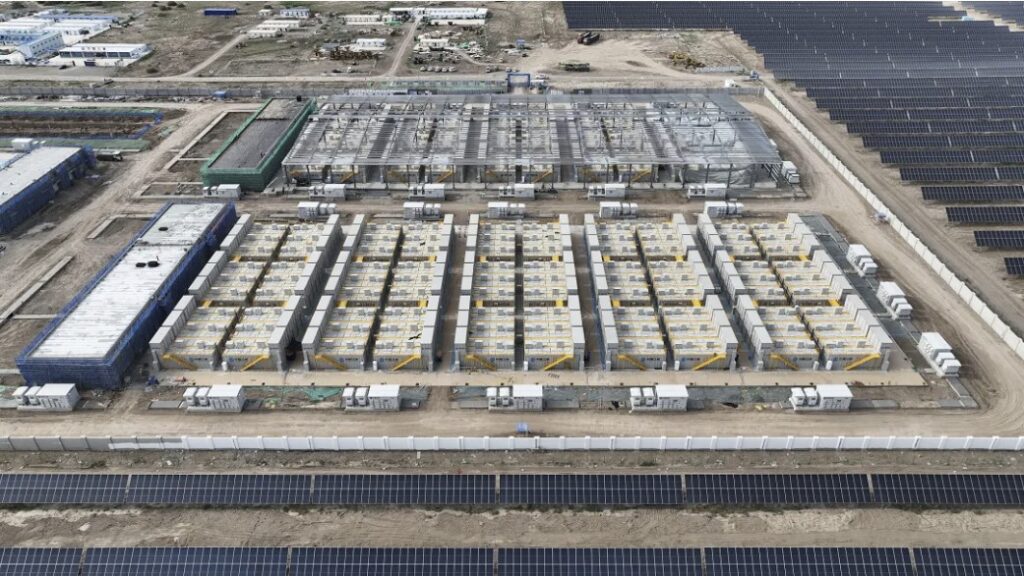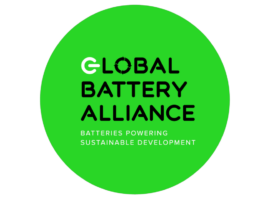Large-capacity battery storage, variety of C&I solutions at China’s EESA EXPO

Some may argue that the Chinese commercial and industrial (C&I) battery energy storage market has busted before it boomed, but the great variety of solutions designed particularly for this market segment and displayed at the recent China International Energy Storage Expo (EESA EXPO) signaled the opposite.
“We are seeing an unprecented demand from the commercial and industrial sector, which is grappling with high energy bills,” says a representative of JD Energy, China’s leading C&I battery storage supplier that includes CATL among its shareholders.
The industrial power rates depend on several factors, such as the type of industry, type of electricity used, region where it is located, and time of use. With the previous peak-valley price differences too small to incentivize load shifts, several provinces in China have moved to amend their time-of-use tariffs to better reflect the rapid rise of wind and solar capacity on the grid. This was achieved by changing the midday peak to valley, allowing for an increased price differential and, thereby, new business cases for energy storage systems. As result, arbitrage – charging the battery during periods of low electricity prices and injecting power back into the grid when prices are high – is being established as a new revenue stream for multiple businesses in China with battery energy storage systems on their premises.
Increasing number of battery manufacturers are now elbowing each other to supply to the nascent market. Many of them were initially focused on other segments. “The residential battery market in China is almost non-existent because of the low and stable energy costs for households. We started in this market segment but then quickly realized that we need to move where the demand is, and this is why we have now launched our C&I solution,” said a representative of GS Energy, a subsidiary of Chinese module manufacturer Risen Energy.
While many have voiced upbeat expectations for the C&I market, others were moderately cautious. “The demand is strong, but not as much as we’re seeing here at the show. There is no space on the market for this many providers,” an industry representative said.
The ongoing power market reforms in China have also given rise to new types of solutions, such as revenue optimization platforms for big battery storage systems. With electricity spot markets in China in developing stages, Beijing is targeting a unified national electricity market in 2030 with prices determined by supply and demand. Presently, battery storage systems in provinces such as Shanxi, Guangdong, Gansu, and Shandong, which have already launched official spot market operations, are looking at revenue stacking. At the EESA EXPO, SPIC-owned Robestec presented its battery optimization platform, which is said to maximize revenues combining various streams from the day-ahead spot market, frequency regulation, and the capacity market, while simulatenously ensuring minimal degradation of the system. “We are already using our platform with around 1.5 GWh of our own projects, and we see strong interest from third-party project owners in those provinces which have successfully launched spot market operations,” a company representative said.
The EESA show has also displayed the latest energy density achievements in the battery energy storage space on both cell and system levels. Chinese manufacturer Hithium showcased the industry’s highest-capacity lithium iron phosphate (LFP) battery cell breaking the 1000 Ah barrier. The new product is the first LFP battery design for long-duration storage of four to eight hours, called “MIC 1130Ah”. The company expects to start mass producing the new cell type in Q3 or Q4 next year. “We are offering the same guarantees in terms of safety and reliability as for our 314 Ah product,” a company representative said. “However, on a 20-foot container level, the deployment of the new MIC series will translate into 15% cost savings, while offering more than 6 MWh of storage capacity.”
On the system level, the key product announcement at the show came from Chinese multinational Envision Energy, which unveiled the world’s most energy dense, grid-scale battery energy storage system packed in a standard 20-foot container. The product leverages 700 Ah lithium iron phosphate battery cells made by Japan-headquartered AESC, in which Envision holds a majority stake. It delivers an energy density of 541 kWh/㎡, making it the leading one in the industry to date. “We made a huge jump from 315 Ah battery cells used in our previous generation products to 700 Ah and we did this to lower the cost on the system level,” a company representative told ESS News.
While the battery energy storage mix in China has been diversifying, with sodium-ion, flywheel, and solid-state battery energy storage systems finding their way to the grid, it took multiple times circling through the exhibition halls to find anything other than lithium-ion systems. A 220 Ah sodium-ion cell was displayed at the stand of Great Power, alongside its solid-state battery cell launched only a couple of weeks before the show. The release of the 20 Ah battery with the energy density of 280 Wh/kg, which can be best used in large logistic drones, has seen the company’s value increase by 70%. The company claims to have solved the technical issues related to the oxide solid-state electrolyte and expects to be able to produce the battery at only a 15% higher cost than that of current lithium batteries. Meanwhile, it reports little to no demand for its sodium-ion products. “Sodium-ion demand soared three-four years ago on the back of constraints in the lithium-ion supply chain. Now, with lithium-ion prices at record lows, sodium-ion batteries are twice as expensive, and this is making them a hard sell,” a company representative said. Great Power currently has a sodium-ion manufacturing capacity of 20 MWh annually, alongside its 50 GWh lithium-ion production lines. “We can readily accept even bigger orders, but there is simply no demand,” the company representative said.
According to the conference organizers, the show attracted more than 600 exhibitors and more than 150,000 visitors from 31 countries. This was the first year that EESA organized its expo in Shanghai, and it has seen the numbers reduced from more than 900 exhibitors and more than 200,000 visitors at its 2023 event held in Suzhou, in the province of Jiangsu.














